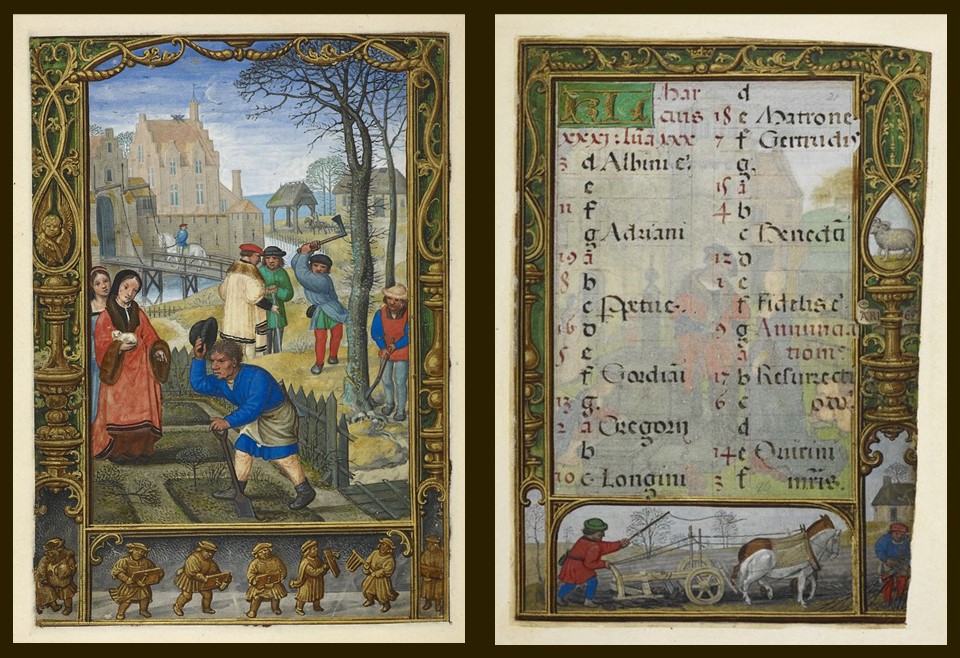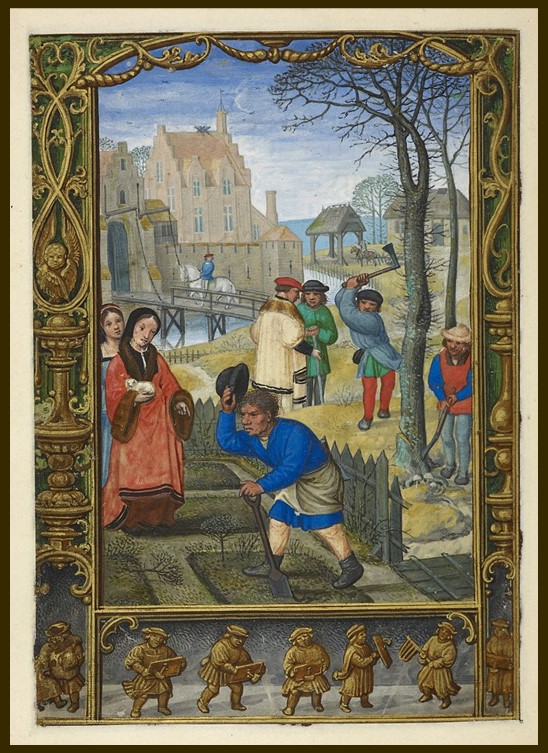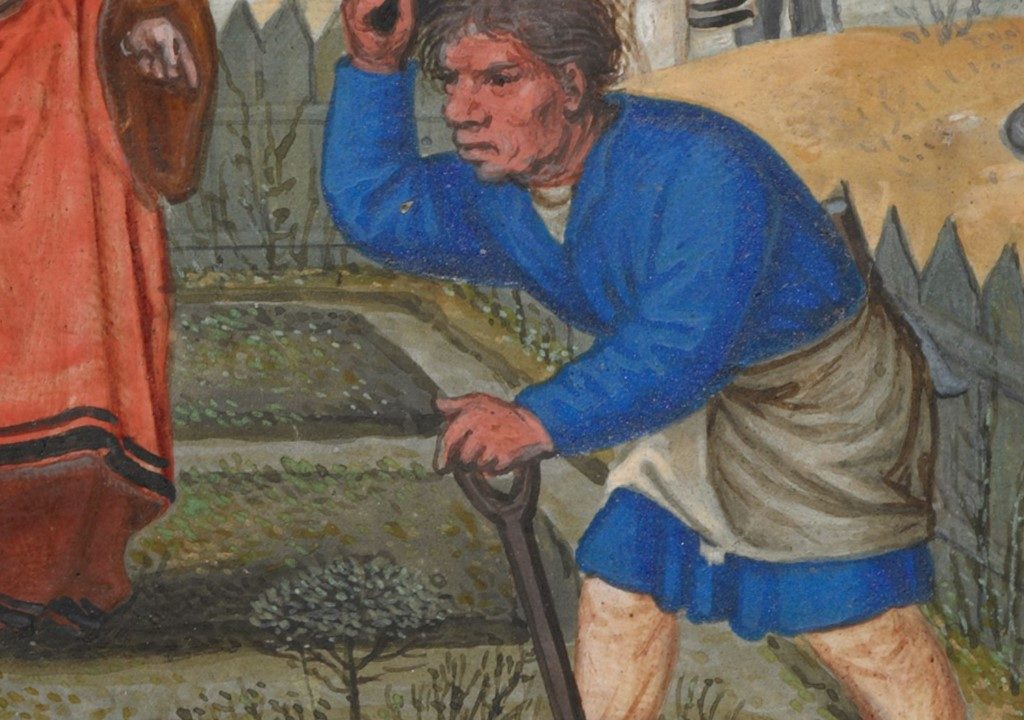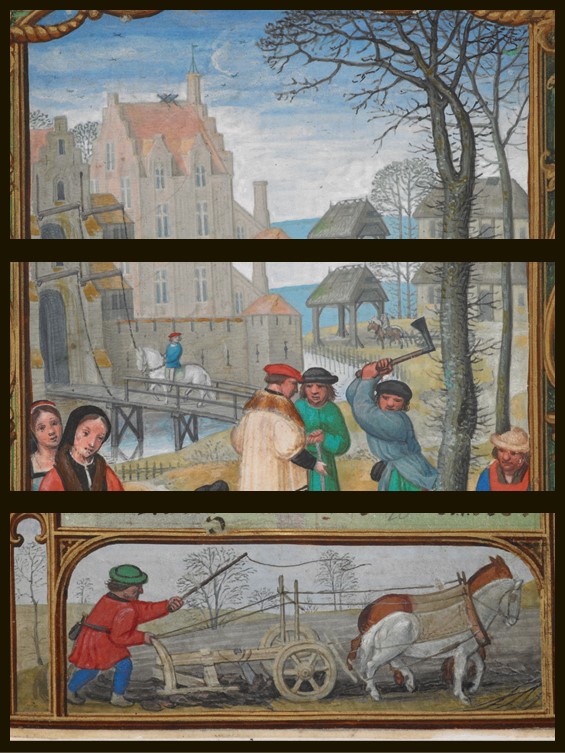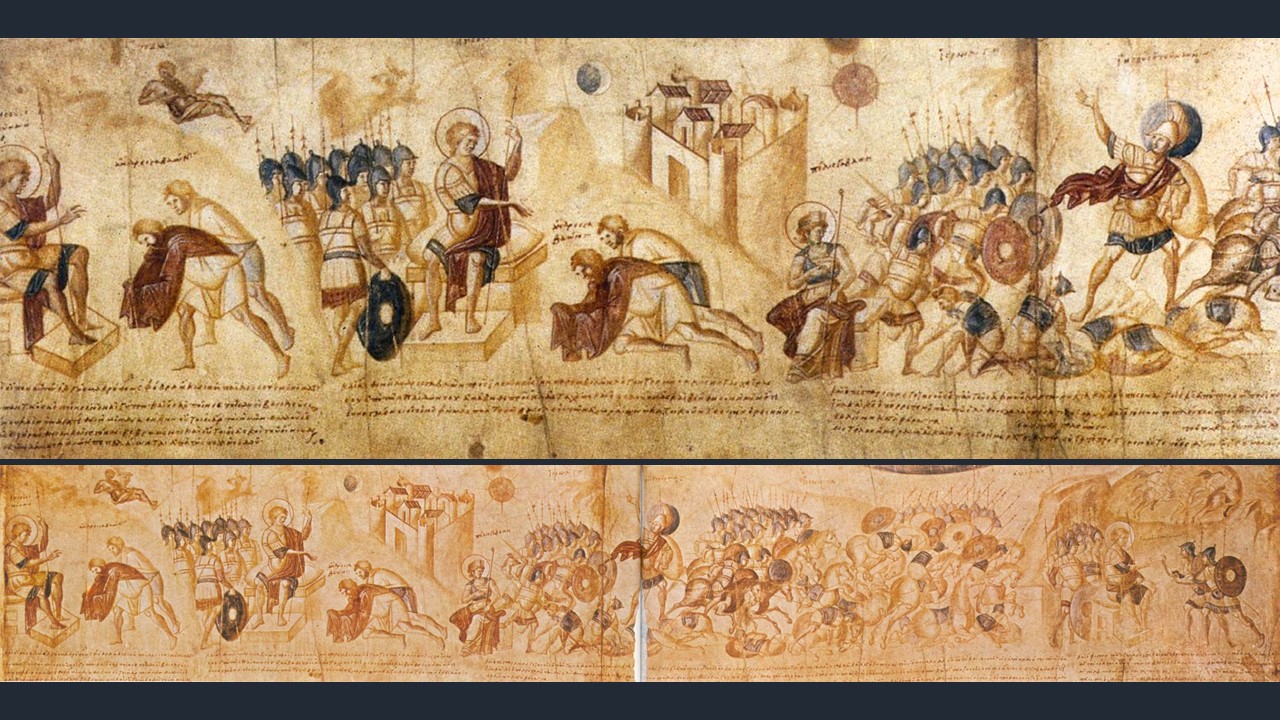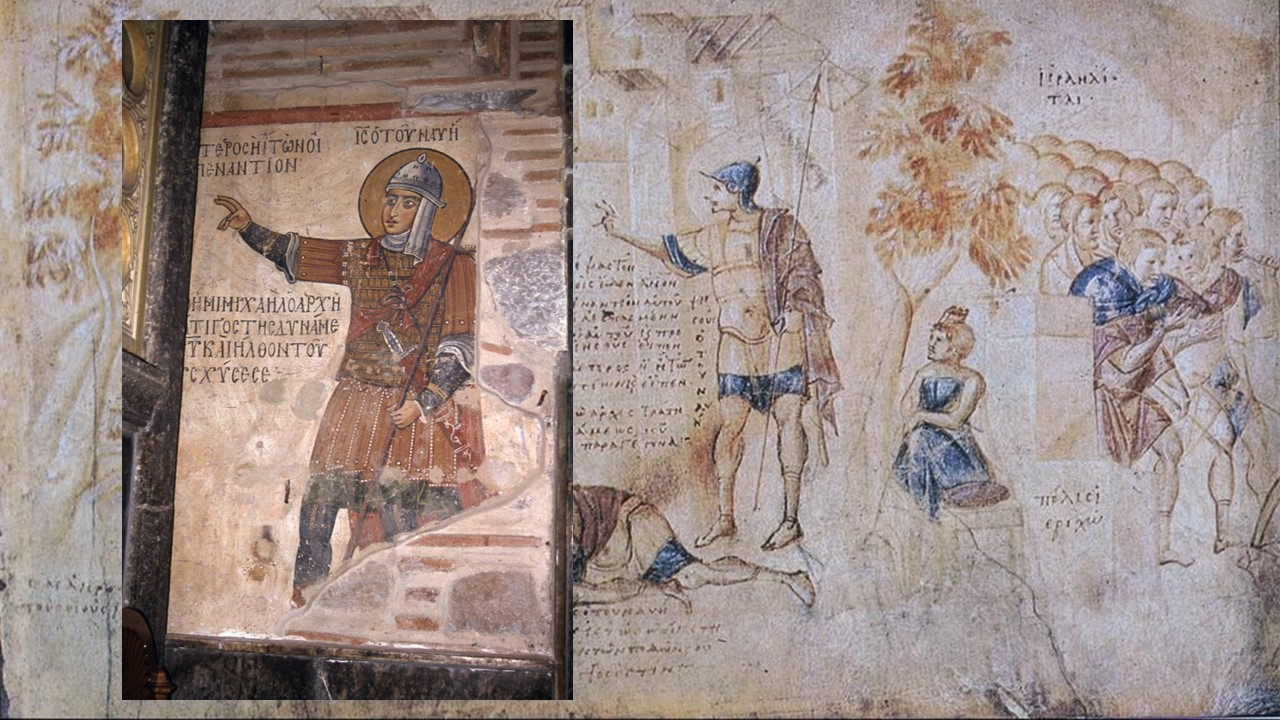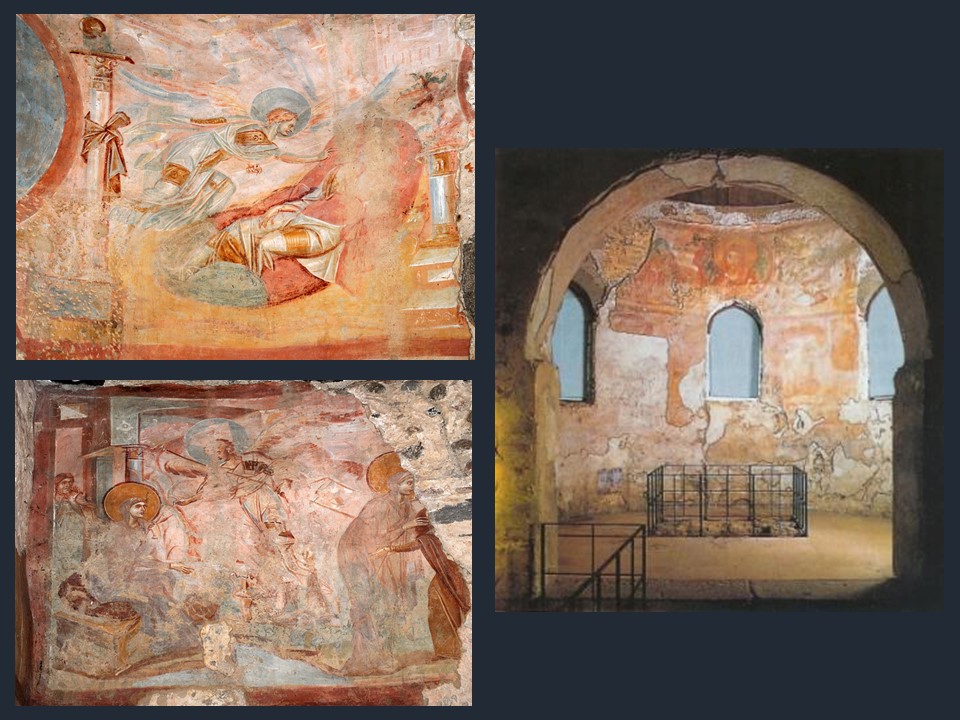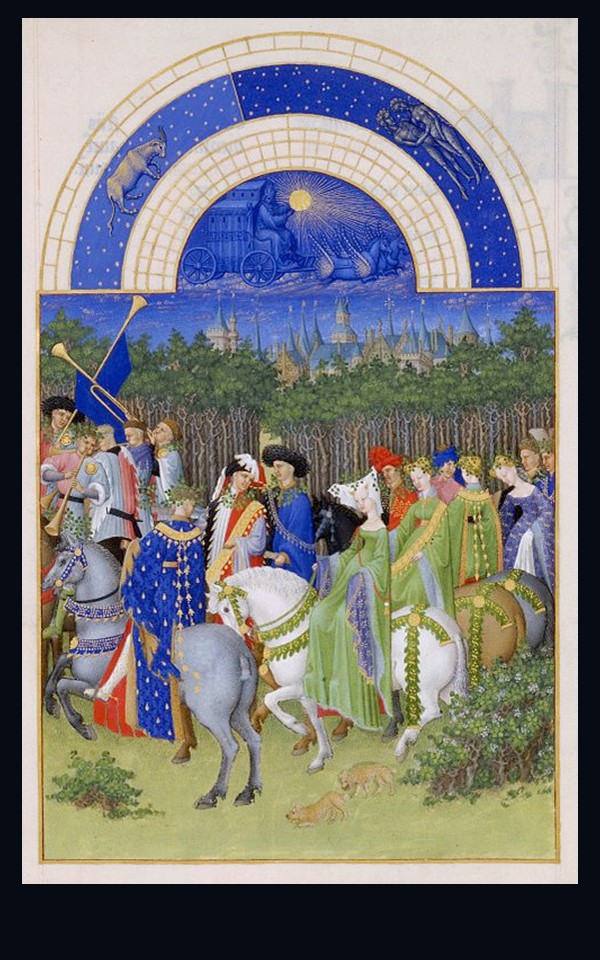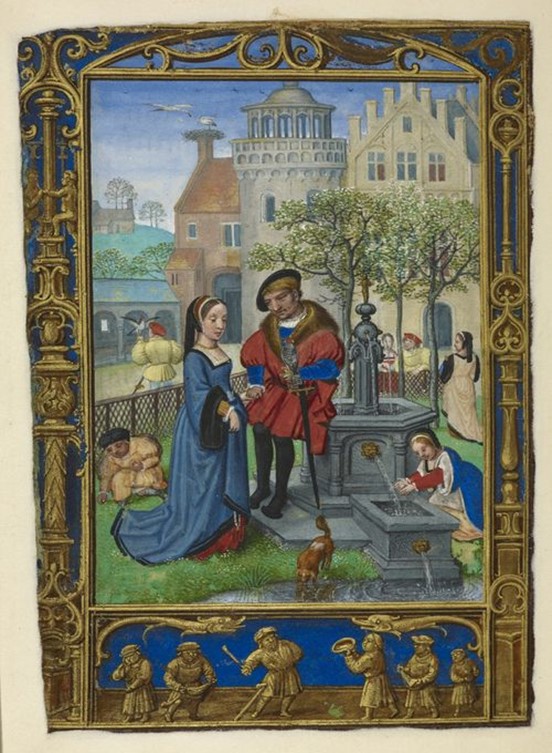
Book of Hours, known as the Golf Book, April (f. 21v),c. 1540, 30 Parchment leaves on paper mounts, bound into a codex, 110 x 80 mm (text space: 85 x 60 mm), British Library, London, UK
https://blogs.bl.uk/digitisedmanuscripts/calendars/page/11/
Praise the spells and bless the charms, / I found April in my arms. / April golden, April cloudy, / Gracious, cruel, tender, rowdy; / April soft in flowered languor, / April cold with sudden anger, / Ever changing, ever true — / I love April, I love you…wrote Ogden Nash (1902 – 1971), the 20th-century American writer of humorous poetry! Could Simon Bening’s Calendar page for the Month of April be an example of a Renaissance April Love? https://www.poemhunter.com/poem/always-marry-an-april-girl/
Folio 21verso of Simon Bening’s Book of Hours, known as the Golf Book, is dedicated to the Month of April and exhibits a magnificent scene of Renaissance courtship! It all takes place in a beautiful garden, possibly in a town, surrounded by a low fence containing three trees, whose crowns are rather sparse because of their recent blossoming, grass, flowers, and a hexagonal fountain topped by a bronze-colour statue of a discreet Venus pouring water into a hollow in the garden, where a dog drinks. Simon Bening, the inventive painter of the Book of Golf presents the viewer with a detailed vista of impressive Flemish buildings, a magnificent Italianate colonnaded tower, and a lovely vignette… of a pair of storks nesting on a chimney, one of them flying over it. The scene, apart from the courting couple, is quite busy with a lady strolling about the garden alone… a couple of sweethearts talking and a man with a falcon perched on his left hand. In the foreground of the composition, Bening painted a boy, picking up flowers, and a young girl stretching her hands out towards the water, enjoying a crisp day of Spring. https://www.moleiro.com/en/books-of-hours/the-golf-book-book-of-hours/miniatura/603
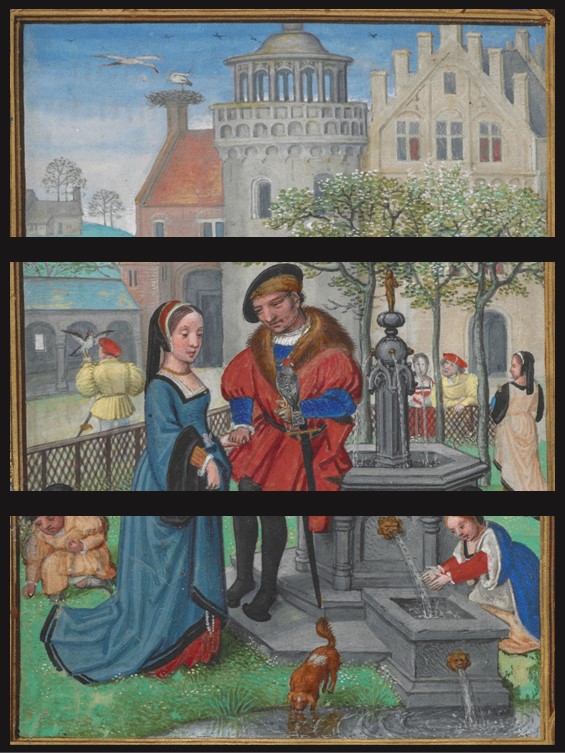
Book of Hours, known as the Golf Book, April (Details, f. 21v),c. 1540, 30 Parchment leaves on paper mounts, bound into a codex, 110 x 80 mm (text space: 85 x 60 mm), British Library, London, UK
http://www.bl.uk/manuscripts/Viewer.aspx?ref=add_ms_24098_fs001r
The protagonists of Bening’s April arrangement, depicted in the center of the composition, outshine everything else! The young Lady, beautifully dressed in the latest of 16th-century fashion, wears a loose-fitting blue gown, revealing a red petticoat underneath when raised, with a wide, square neckline with a white ruff (a large round collar of intricately pleated muslin). She demurely gives her left hand to a gentleman, even more impressively dressed, who sits on the edge of the fountain, holding with his right hand a hooded falcon, and leaning towards her. The depicted man seems older than his mistress. He wears French garb consisting of a square-necked gown over a fastened shirt with a high, ruffled-edge collar, a skullcap (close-fitting cap), and a hat, long, dark-coloured hose, a very short type of footwear that appeared in the last quarter of the 15th century, and, hanging from his belt, an impressive, long sword. https://www.moleiro.com/en/books-of-hours/the-golf-book-book-of-hours/miniatura/603
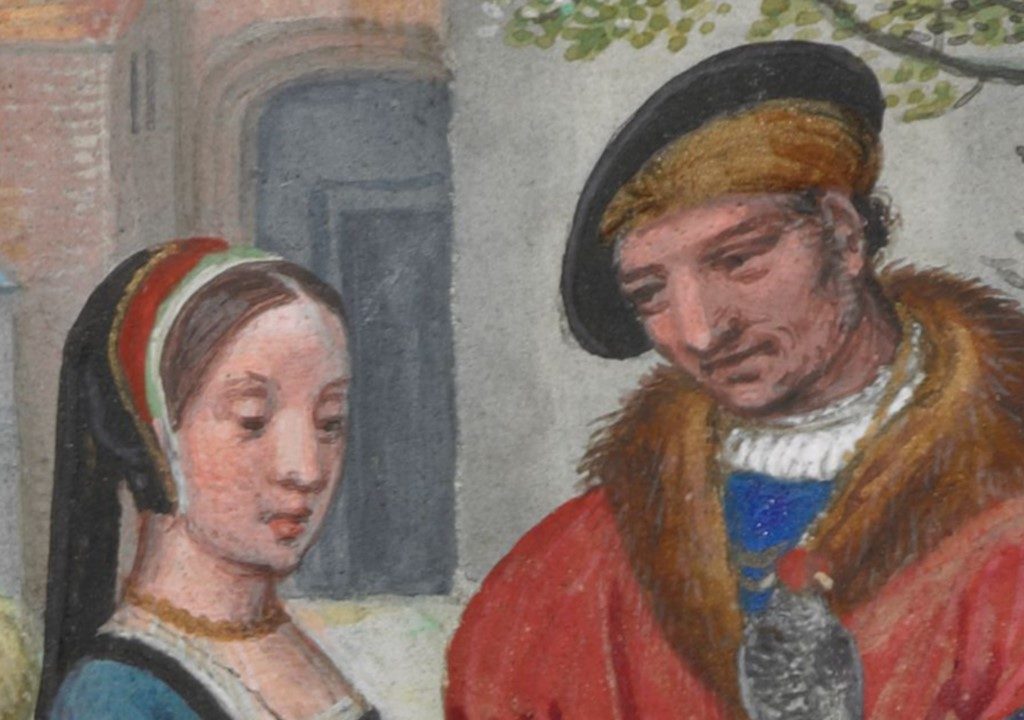
Book of Hours, known as the Golf Book, April (Detail f. 21v),c. 1540, 30 Parchment leaves on paper mounts, bound into a codex, 110 x 80 mm (text space: 85 x 60 mm), British Library, London, UK
http://www.bl.uk/manuscripts/Viewer.aspx?ref=add_ms_24098_fs001r
This is an elegant scene of courtship between members of the aristocratic society. A romantic scene of a couple emotionally and socially attached is a symbol of a tacit agreement of commitment between the two persons. What I like most in Bening’s April scene is how the young Lady lowers her eyes shyly while her gallant suitor looks at her…amorously smiling! What a scene! https://www.moleiro.com/en/books-of-hours/the-golf-book-book-of-hours/miniatura/603
For a PowerPoint on the Golf Book, please… Check HERE!
For a Student Activity on Simon Bening’s April Page, please… Check HERE!
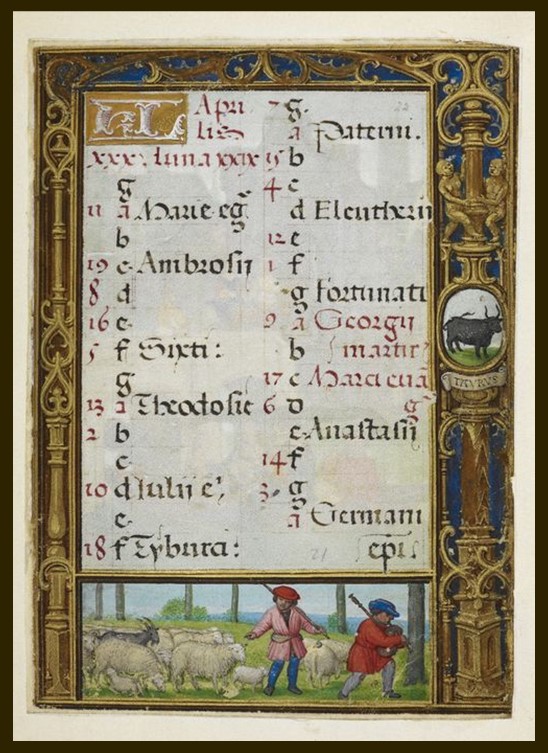
Book of Hours, known as the Golf Book, April (f. 22r),c. 1540, 30 Parchment leaves on paper mounts, bound into a codex, 110 x 80 mm (text space: 85 x 60 mm), British Library, London, UK
https://blogs.bl.uk/digitisedmanuscripts/calendars/page/11/
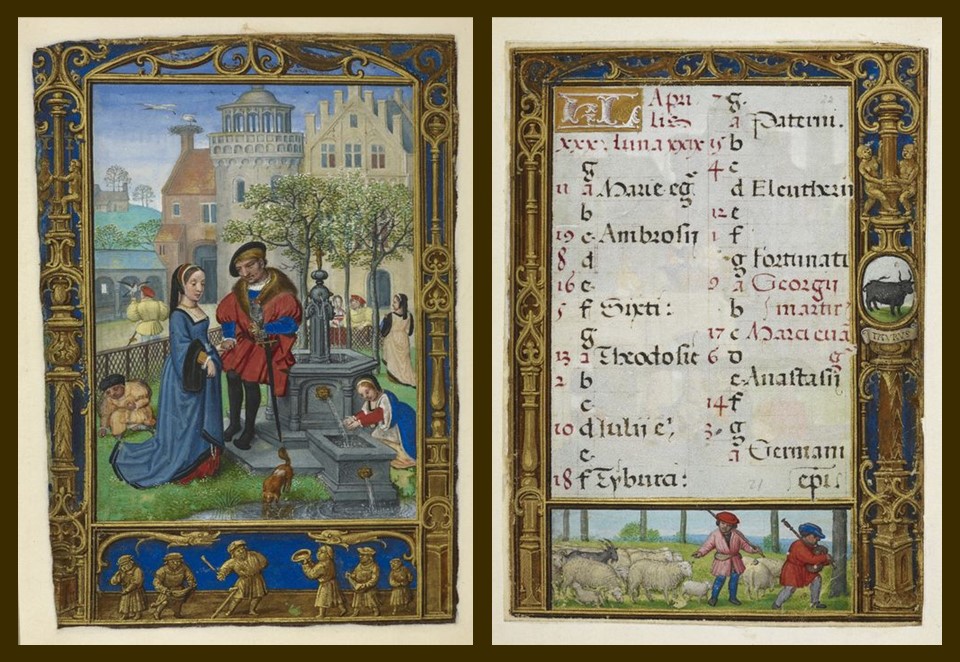
Book of Hours, known as the Golf Book, April (f. 21v and 22r),c. 1540, 30 Parchment leaves on paper mounts, bound into a codex, 110 x 80 mm (text space: 85 x 60 mm), British Library, London, UK
https://blogs.bl.uk/digitisedmanuscripts/calendars/page/11/
